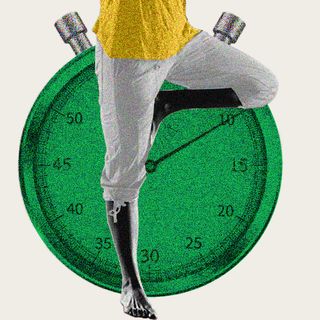
All You Need to Know About Separation Anxiety Disorder
The anxiety disorder is fraught with cultural mores and expectations, complicating the experience further.

In pop culture, separation anxiety is often depicted as part of growing pains: when children are anxious to be away from a parent, babies start bawling when taken from the arms of their mothers, or mothers themselves getting “hysterical” at being separated from their children for any reason. But separation anxiety disorder encompasses more than a parent-child bond: it is recognized as one among a spectrum of anxiety disorders that can negatively impair someone’s life.
In other words, separation anxiety itself is normal and a healthy part of an individual’s growth. It becomes a disorder when it manifests pathologically, and impairs people’s lives even as adults.
What Are the Symptoms of Separation Anxiety Disorder?
In children, the diagnostic criteria for separation anxiety disorder is avoidance in being or sleeping away from a caregiver, and experiencing great distress at separation.
In adults, according to the Diagnostic and Statistical Manual of Mental Disorders, 5th edition (DSM-5), separation anxiety disorder is characterized by excessive worry before or during any form of separation, fearing hypothetical situations involving losing a loved one, worrying about real life events that could harm a loved one, not wanting to be away from someone, having nightmares about losing someone, and other similar feelings that can impact a person’s day-to-day life. Specifically, the fear is bound up in being apart from a figure who is associated with being a source of safety and comfort.
The anxiety could be around any kind of attachment figure; not necessarily a person. A pet, a house, or any significant object can also be the subject of someone’s separation anxiety. It becomes a disorder if it is atypical for someone’s age and development, and in adults, enduring it for six months makes it a diagnosable condition according to the DSM-5.
Who Can Have Separation Anxiety Disorder?
Across some studies, women were found to be more likely to experience separation anxiety — both as children and as adults. In addition, people who grew up experiencing non-normative sexuality and gender were also shown to experience it on a greater level than heterosexual men. Women who had childhood separation anxiety, moreover, were found to be associated with eating disorders and insecure attachment styles in relationships as adults.
Related on The Swaddle:
All You Need to Know About Dependent Personality Disorder
While the DSM used to have a limit of 18 years of age at the time of onset for diagnosis, this was later removed in recognition of the fact that separation anxiety can manifest at any time and at any age, and is often a lifelong condition. A study across countries found that while relatively fewer adults develop separation anxiety as compared to children, they also respond to conventional treatments poorly as opposed to other anxiety disorders.
Other research has also shown that there are strong cultural factors involved in the recognition and manifestation of separation anxiety disorder.
What Causes Separation Anxiety Disorder?
Separation anxiety can be correlated with other neurodivergent or neurodevelopmental factors — such as autism, obsessive compulsive disorder (OCD), and even social phobias like agoraphobia. Other underlying causes for the condition in adults can be traumatic events in early life — such as the death of a loved one, abuse, or moving away from support structures. A family history of mental illness can also cause the disorder in children.
But it doesn’t always have to be traumatic. “Significant life transitions such as moving away to college or having a child can trigger adult separation anxiety, particularly for those who have an underlying anxiety disorder,” explained Allison Forti, a counsellor.
Many adults who experience acute separation anxiety in their relationships experienced traumatic losses or neglect in their childhood. This, in turn, can lead to them being overprotective parents or overbearing partners — both not ideal for the health of the respective relationships. Additionally, many adults diagnosed with separation anxiety will have been previously diagnosed with other personality disorders, post-traumatic stress disorder, and other mental illnesses.
How Can Separation Anxiety Disorder Be Treated?
The most common form of treatment is cognitive behavioral therapy (CBT); others include dialectical behavioral therapy (DBT), exposure therapy, and medication. Couples or family counseling to help the individual interact more effectively with the persons they are having trouble separating from, can also help, as can certain medications that decrease anxiety, like selective serotonin reuptake inhibitors,” Judy Ho, a clinical and forensic psychologist, told Health.
Rohitha Naraharisetty is a Senior Associate Editor at The Swaddle. She writes about the intersection of gender, caste, social movements, and pop culture. She can be found on Instagram at @rohitha_97 or on Twitter at @romimacaronii.
Related


Inability To Balance on One Leg for 10 Seconds Is Linked to Risk of Early Death, Study Shows
